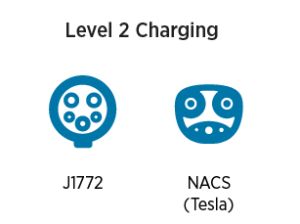About
Optimizing Your Property with a Charge
At Citrine, our mission is to revolutionize the way commercial businesses utilize their properties by implementing innovative and reliable electric vehicle (EV) charging solutions. We’re here to transform your location into a powerhouse of efficiency and sustainability.

Our Story
At Citrine, our mission is to revolutionize the way Founded on the principles of innovation, reliability, and customer-centricity, Citrine has swiftly established itself as a frontrunner in the EV charging industry. Our team of friendly tech gurus brings together extensive knowledge and a passion for energy solutions to offer services that are not just cutting-edge but also dependable and engaging.
Reliability
"Business is unpredictable. Your property's charging opportunity shouldn’t be." We provide steadfast service and dependable technology that keeps you powered up at all times.
Efficiency
"Power up without slowing down." Our state-of-the-art technology ensures that your operations never skip a beat.
Innovation
"We’re charging up clients' properties with cutting-edge EV charging technology." Citrine is at the forefront of the EV charging sector, continually advancing our technology and services to meet and exceed industry standards.
Customer-Centric
"We listen, we deliver, we care." At Citrine, you are our priority. Our team is dedicated to providing personalized service and support to ensure your needs are met with the utmost satisfaction.
FAQ
Have any questions? We can help answer them.
What is OCPP?
OCPP (Open Charge Point protocol) is a shared language which is used by EV Charger and software management platforms to communicate to each other. Not all electric vehicle chargers are OCPP compliant. But the ones who are enjoy a wide selection of features.
What circuit size is required for my EV charger?
To connect a 32A EV charging station, you need to have a 40A circuit breaker available. For a 40A EV charger - 50A circuit breaker and 48A EV charger - 60A circuit breaker.
What is a Level 2 EV charger?
EV chargers are categorized by levels:
- Level 1
- Level 2
- Level 3
- DCFC (DC Fast Charger)
A Level 2 charger is a high-power rate option that can charge your vehicle in less time than a Level 1 charger while still being suitable for residential and commercial applications. DCFCs, on the contrary, are mainly reserved for large commercial and industrial applications.
Do all EVs use the same connector?
All Level 1 and Level 2 chargers feature a standard plug or connector, receiving the name of Type 1 connector.
A Type 1 connector is an international standard plug known as the SAE J1772 connector or simply as a J connector.
But this is not the case for DC Fast Chargers (DCFCs) or Level 3 Chargers. They tend to feature different plugs with a common type being the NACS connector.
NACS (North American Charging Standard), developed by Tesla but open-sourced to all automakers, chargers prioritize DC charging, enabling much faster charging times compared to the traditional J1772 standard that delivers AC power from residential and smaller commercial chargers. The NACS connector is on it way to becoming a standardized connector for all auto manufacturers in the coming year to increase charging inclusivity. This emphasis on rapid charging enhances the overall charging experience for non-Tesla cars, particularly during long-distance travel.
How fast are Level 2 EV Chargers?
The Level 2 chargers are extremely fast compared to regular Level 1 chargers. The most 240V charging station features a power rate of 7.5kW, but Level 2 chargers can feature power ratings from 3kW to 20kW. Charging speed in kilowatt-hour per mile varies between EV models. For instance a Tesla Model 3 could get as much as 83 miles of charge in a single hour and could be fully charged in 3 hours.
What is different between Level 1, 2, 3 and 4 EV Chargers?
Consider the battery capacity of the vehicles that will use the charger.
- Nissan Leaf - 40kWh
- Sprinter Panel Van - 125kWh
- Freightliner eCascadia Semi - 550kWh
Consider the EV charger's capacity.
- Power
- Level 1 AC: 1-1.8kW
- Level 2 AC: 3-22kW
- Level 3/DCFC: 30-360kW
- Level 4 (DCFC): >1MW
- Current passenger vehicle charging at 25-350kW of power
- Next-generation medium- to heavy-duty vehicle charging equipment is already pushing >1MW
Consider the scale of the fleet.
- How many vehicles will need to be charging at once?
Our Commitment to Sustainability
We are committed to promoting sustainability in every aspect of our business. By choosing Citrine, you're not only optimizing your property but also contributing to a greener planet. We believe in making a positive impact on the environment while delivering exceptional value to our clients.

